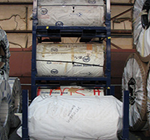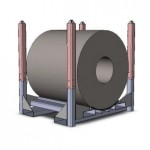How to Simplify Assembly to Storage Workflow?
Assembly to storage workflow refers to the process of manufacturing a product and storing it until it is ready for sale or distribution. The workflow typically begins with the assembly or production of the product using raw materials or components. Once the product is assembled or manufactured, it is then inspected for quality control and packaged for storage or shipping.
Making this workflow simple is crucial to optimize the production process. This has several benefits, such as boosting efficiency, enhancing organization, reducing errors, saving costs, improving communication, and ensuring greater safety.
A simplified workflow reduces the time and effort required to move products from the assembly area to storage, allowing workers to focus on other tasks such as quality control, which can improve productivity. It also ensures that products are tracked efficiently, reducing the risk of misplaced or lost items, which can cause delays and increase costs.
Challenges in Assembly to Storage Workflow
There are several challenges faced in the assembly to storage workflow that can impact the production process. Some of these challenges include:
- Lack of standardization: When the process is not standardized, it can lead to confusion, miscommunication & errors. This can cause delays in production and lead to increased costs.
- Inefficient use of storage space: When storage space is not utilized effectively, it can result in cluttered workspaces, misplaced items, and reduced productivity.
- Inadequate labeling and identification: When products and materials are not properly labeled, it can lead to confusion, errors, and delays in the assembly process.
- Poor communication between teams: When there is poor communication between the production and storage teams, it can lead to delays, errors, and lost productivity.
The impact of these challenges can be significant, including:
- Reduced productivity: When there are errors, delays & miscommunications, it can lead to reduced productivity and throughput.
- Increased costs: When there are errors, delays, and inefficiencies, it can lead to increased costs due to the need for rework, overtime, or extra storage space.
- Quality issues: When there are errors in the assembly or storage process, it can result in quality issues that can impact the final product.
- Safety concerns: When storage space is cluttered or disorganized, it can lead to safety concerns for workers.
Ways to Simplify the Workflow
Assembly to storage workflow is a crucial aspect of any manufacturing or production process. To simplify this workflow, there are several steps that can be taken:
- Standardize the process: The standardization of the process involve creating a standard operating procedure (SOP) that outlines the steps to be taken and the roles and responsibilities of each team member involved in the process which streamlines the process in a more efficient manner
- Implement visual management: Visual management techniques such as color coding, visual cues, and visual aids can help to simplify the assembly to storage workflow.
- Optimize storage space with racks: To make the most of available space, it is important to use racks and shelving units that are designed to maximize storage capacity. This can include using specialized racks such as industrial storage racks, mobile shelving units and movable storage racks that can be easily moved and adjusted as needed.
- Use labeling and barcoding systems: Using barcode scanners or mobile devices to scan barcodes and track inventory in real-time can make it easier to locate specific products or parts.
Simplifying the assembly to storage workflow is an important step towards improving productivity and efficiency in any industry that involves the use of assembly lines. The use of technology, such as automation and robotics, can play a key role in simplifying the workflow and enhancing the overall efficiency of the assembly line. As companies continue to innovate & adopt new technologies, it is important to prioritize simplification and streamlining of the workflow to achieve optimal results. Also, implementing racks throughout the workflow can provide an organized and efficient storage solution that helps to optimize storage space and improve accessibility, and workers can focus on other important tasks, ultimately saving time and reducing costs.
Related Posts:
- How to Choose a Suitable Storage Rack System for Your Warehouse?
- How to Find the Right Size of Pallet Rack?
- How to Design Your Warehouse Racking Layout for Optimization?
- What Essential Factors One Must Consider Before Warehouse Pallet Rack Installation?
About The Author












